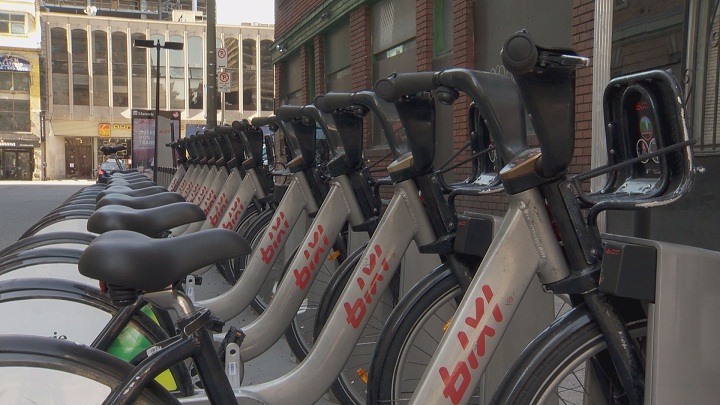Bixi, Montreal’s bike-sharing service, launched its ninth season under blue skies on Saturday.

The bike-sharing service has seen an 81 per cent increase in ridership since 2014, when it filed for bankruptcy. Last season, 235,000 people made use of Bixi’s services to get around town.
READ MORE: Bixi switches into high gear with new sponsor Manulife
Riding off that success, Bixi president Marie Elaine Farley announced 80 new stations and 1,000 additional bicycles have been added for the 2017 season.
That brings the total to 540 stations and 6,250 bicycles, making it one of the largest networks in North America.
READ MORE: Bixi and STM partner up for pilot project in Montreal
To encourage residents to use public transit and active modes of transportation, Bixi has teamed up with the Société de transport de Montréal (STM) to allow users to rent a bike with an OPUS card. Additionally, Bixi intends on offering discounts to those who purchase a block of 10 single rides.
And while many took to social media to celebrate the start of Bixi season, not everyone is happy.
A report released earlier this week by the Montreal Economic Institute (MEI) estimates that by the time Bixi celebrates its 10th anniversary, the bike-sharing service will have cost Montrealers $60 million.

Get daily National news
MEI vice-president Jasmin Guénette isn’t denying the popularity of the service, but is questioning its profitability and whether it’s a burden that should be shouldered by taxpayers.
“It’s true that Bixi is popular, but do taxpayers really want to continue paying so much to maintain a public service basically limited to central neighbourhoods?” Guénette said in a written statement.
READ MORE: City of Montreal to invest $15M in bike paths for the 2016-2017 season
The report also took aim at claims the service has a positive impact on the environment, — according to the MEI, the impact is negligible. The service appears to be used to replace walking, other cycling or public transit use.
Rather than keeping the service afloat, Guénette argued it may have been better to invest in developing the city’s cycling network.
“Today, we may well wonder if spending so much money for this service was the best way to promote cycling and active transportation, and why we keep spending this money,” he said.



Comments